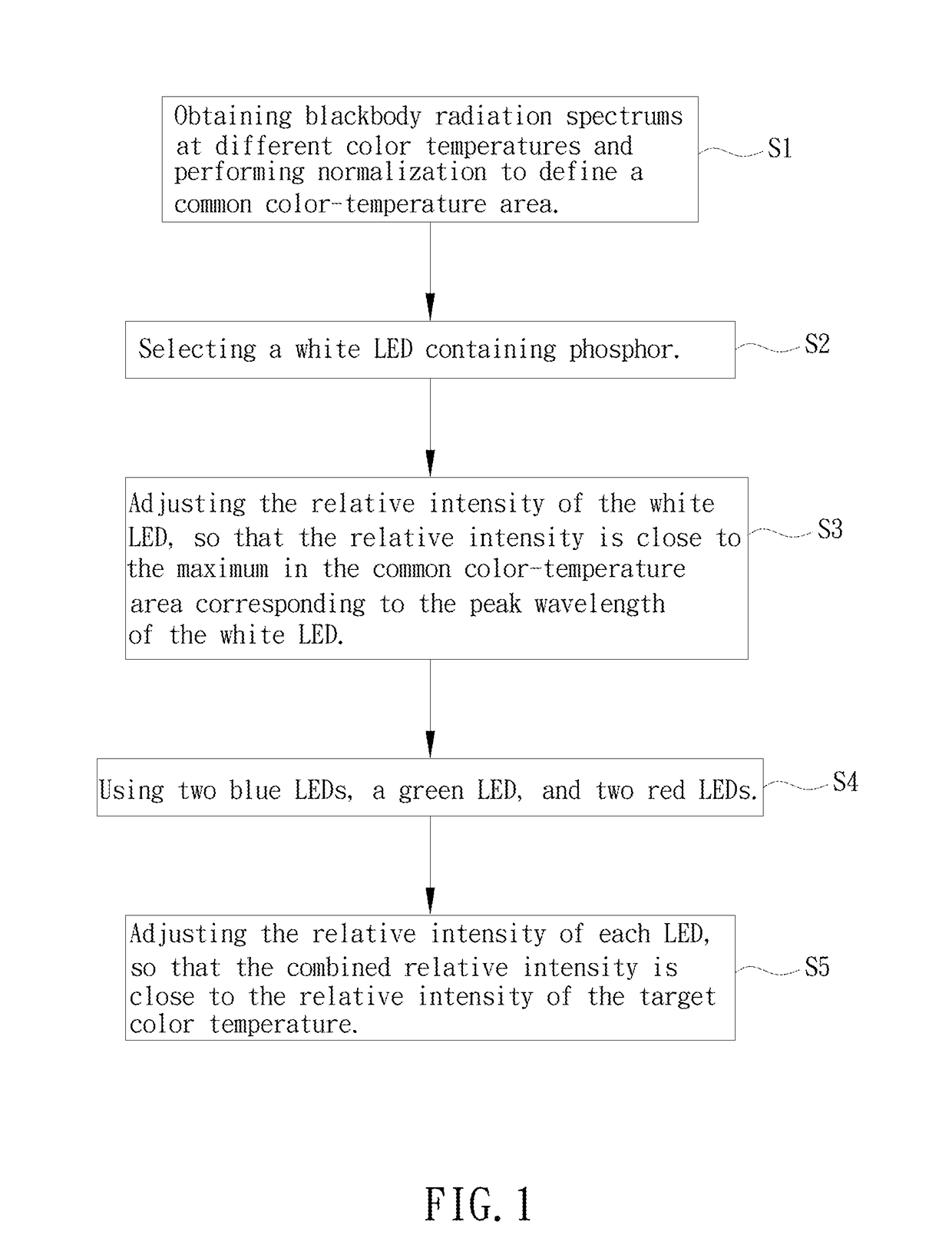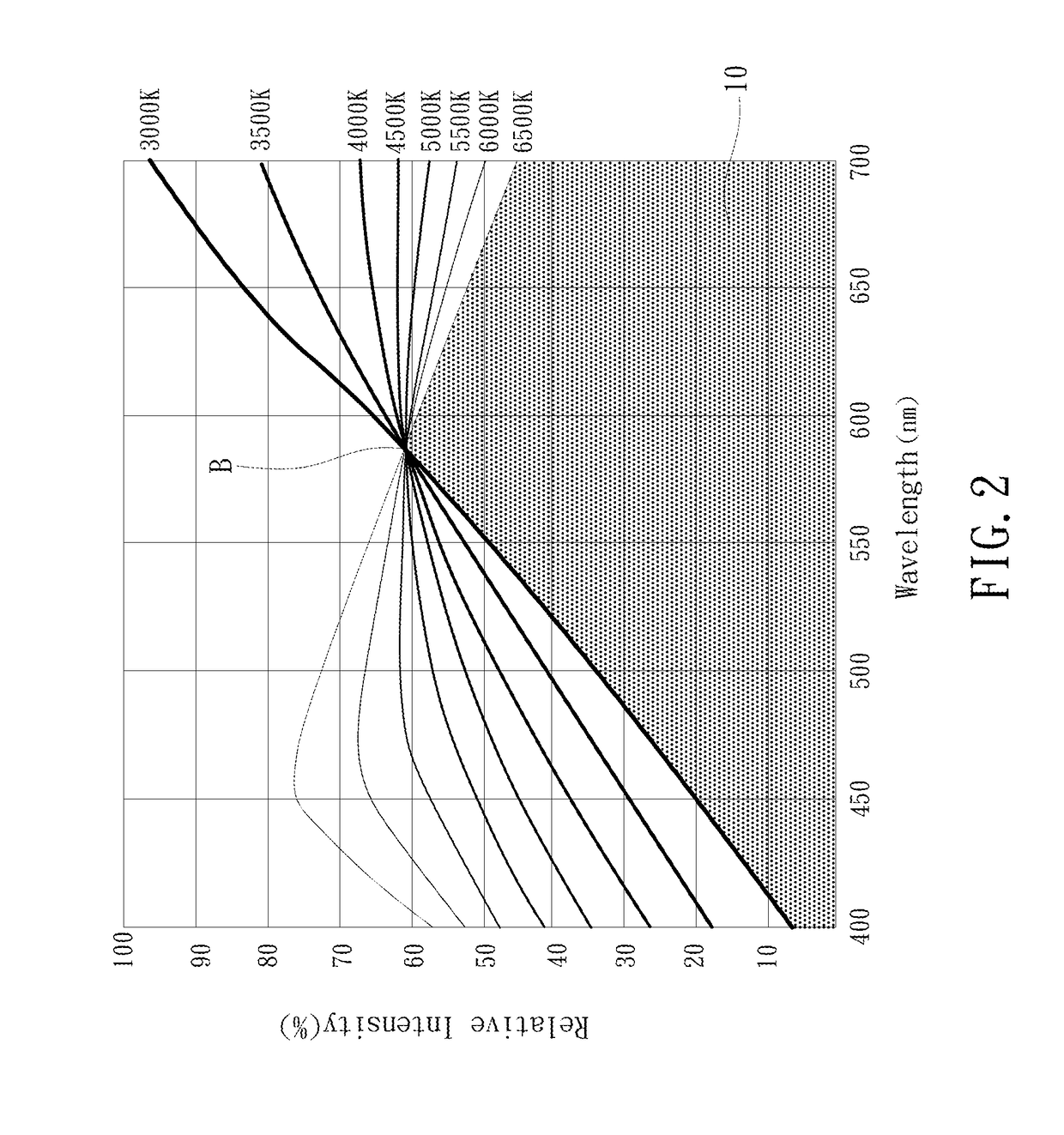Method for modulating color temperature in visible band
a color temperature and visible band technology, applied in the field of modulating color temperatures, can solve the problems of increasing the doubts of experts in various fields about the conformity of reference materials, the difficulty of achieving good color rendering properties in different color temperatures, and the increase of the application of cri
- Summary
- Abstract
- Description
- Claims
- Application Information
AI Technical Summary
Benefits of technology
Problems solved by technology
Method used
Image
Examples
first embodiment
[0036]In addition, in Step S4, the selected blue, green and red LEDs are identical to those of the first embodiment in terms of quantity and peak wavelength, with the difference that the ratio of the relative intensities of the used two green LEDs (with peak wavelengths as 500 nm and 525 nm) is 5:3, and the ratio of the relative intensities of the used three red LEDs (peak wavelengths as 600 nm, 620 nm and 630 nm) is 4:5:22. The modulated color-temperature curve G is as shown in FIG. 12. It is very close to the target color temperature, 6500K, and thus the cold white light with a color temperature of 6500K can be accurately simulated.
third embodiment
[0037]The present invention further provides a Referring to FIG. 13 and FIG. 14, the present embodiment has normalization performed at the benchmark wavelength B of 570 nm, and has the target color temperature set at 4000K. Also, the primary-peak wavelength 21 of the white LED peak wavelength 20 is close to the benchmark wavelength B (as shown in FIG. 13).
[0038]In a fourth embodiment, the selected blue and green LEDs are identical to those of the first embodiment in terms of quantity and peak wavelength, with the difference that four red LEDs are used, and the peak wavelengths in the red LEDs' spectral curve 51, 52, 53, 54 are 590 nm, 620 nm, 630 nm, and 660 nm respectively.
[0039]The two green LEDs (peak wavelengths at 500 nm and 525 nm) have a ratio between their relative intensities as 5:1, and the ratio of the relative intensities of the four red LEDs (peak wavelengths at 590, 600 nm, 620 nm and 630 nm) is 1:3:3:11. The modulated color-temperature curve G is as shown in FIG. 14,...
PUM
 Login to View More
Login to View More Abstract
Description
Claims
Application Information
 Login to View More
Login to View More - R&D
- Intellectual Property
- Life Sciences
- Materials
- Tech Scout
- Unparalleled Data Quality
- Higher Quality Content
- 60% Fewer Hallucinations
Browse by: Latest US Patents, China's latest patents, Technical Efficacy Thesaurus, Application Domain, Technology Topic, Popular Technical Reports.
© 2025 PatSnap. All rights reserved.Legal|Privacy policy|Modern Slavery Act Transparency Statement|Sitemap|About US| Contact US: help@patsnap.com



